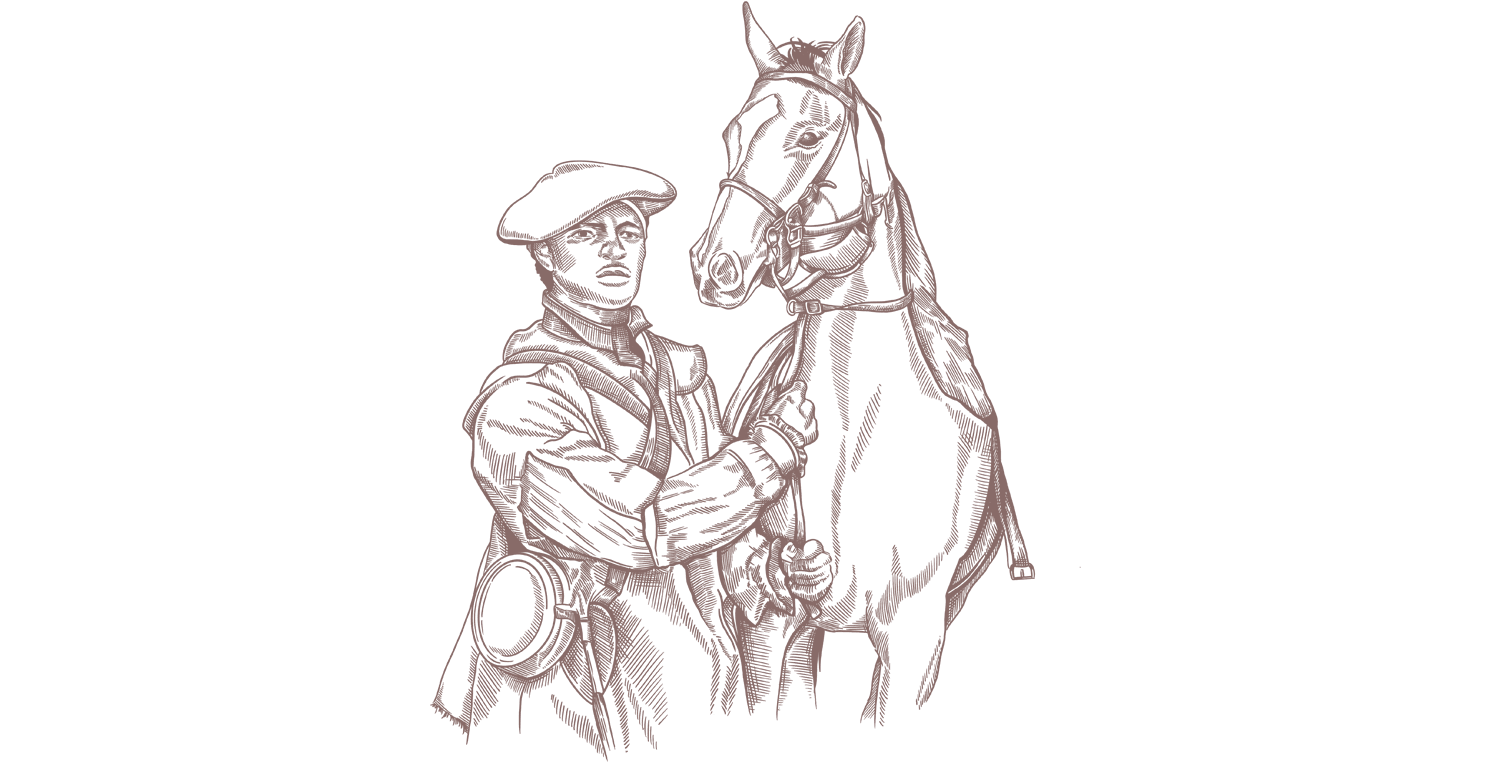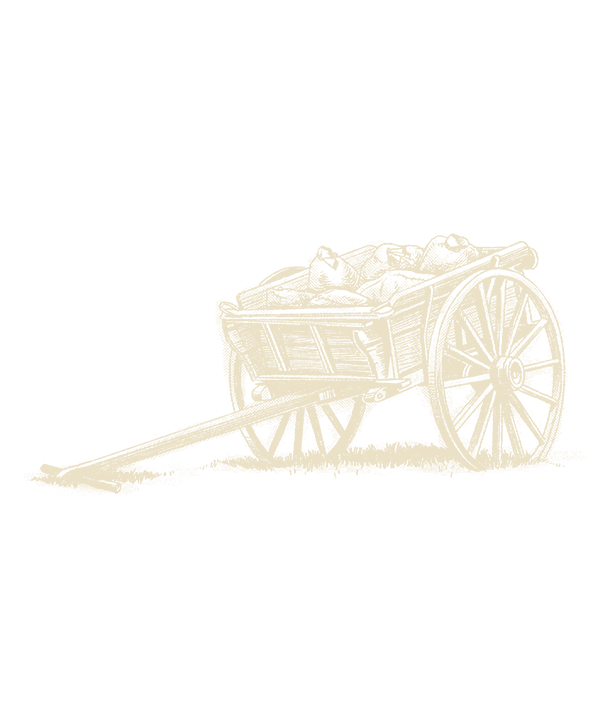

When considering the origins of Revolutionary Patriots of Color, the early lives of multiethnic soldiers such as James Nickens show that they could come from what may be called economically advantaged backgrounds, though not what could be called “privileged” in the modern sense. Nickens was born in approximately 17601 as a freeborn descendant of Edward Nickens, who was a well-to-do Black landowner of Lancaster County, Virginia.2 James appeared to have come from a family of Patriots, as he, along with several of his brothers and cousins, fought against the British on land and in maritime battles.3
James Nickens’s earliest participation in the American Revolution began in the nautical realm. On July 19, 1777, he enlisted in the Virginia State Navy, serving for a combined three years aboard three ships—the Tempest, the Revenge, and the Hero.4 In 1781,5 following his discharge from the U.S. Navy, he joined the Continental Army at Lancaster Courthouse for land service until the war’s conclusion in 1783.6 As a soldier, throughout the duration of the war, he operated as a private.7 As part of his tenure in land service, he fought with troops under Baron von Steuben in Cumberland County, North Carolina, and enlisted in an artillery regiment in South Carolina under the authority of General “Nathaniel” Greene.8 In the Battle of Eutaw Springs, Nickens endured some discrimination, likely based on race.9 During this battle, near Eutawville, South Carolina, on September 8, 1781, officers reportedly prevented Nickens from fighting, instead opting to station him in the rear to oversee the brigade’s baggage.10 Such a position during combat was known colloquially as “Baggage Negro,” which was a typical appointment for Black soldiers.11
Sources
His exact birth year is unclear from the extant sources. The sources used here list him as 17 or 18 in 1781, which would have made his birth year about 1764 or 1763, respectively. Other sources claim he was 72 by 1831, which would have made his birth year about 1759.
Rayford W. Logan, “Nickens, James,” in Africana: The Encyclopedia of the African and African American Experience, eds. Kwame Anthony Appiah and Henry Louis Gates Jr. (New York: Oxford University Press, 2005), 228.
Rayford W. Logan, “Nickens, James,” in Africana: The Encyclopedia of the African and African American Experience, eds. Kwame Anthony Appiah and Henry Louis Gates Jr. (New York: Oxford University Press, 2005), 228.
Karen E. Sutton, “The Nickens Nine: Free African Americans in Lancaster and Northumberland Counties, Virginia, During the Era of the American Revolution” (doctoral dissertation, Morgan State University, 2021), 88.
Karen E. Sutton, “The Nickens Nine: Free African Americans in Lancaster and Northumberland Counties, Virginia, During the Era of the American Revolution” (doctoral dissertation, Morgan State University, 2021), 88.


The relatively prosperous and semi-free life of Nickens and his progeny in many ways belied more typical paths of Patriots of Color, especially in southern slave states like Virginia where free people of color were often discouraged from remaining in following the war’s termination.
After three years of serving in the army, Nickens returned to Virginia.12 Much remains unknown regarding his life after the war. However, records show that he was about 59 years old and living in Falmouth, Virginia on April 27, 1818, when he applied for his war pension in court, and his pension for service commenced on that day.13 He began to receive a federal pension of 96 dollars a year, and his son, James Jr., was given an allowance of 80 hectares (200 acres) of land in Ohio from the state government for his father’s contribution to the war.14 However, like many other veterans of Virginia and their descendants, James Jr. sold his Ohio claim and likely purchased land in Virginia.15
Although James Sr.’s year of death is unknown, he was noted to be a pensioner living in Stafford County, age 85, in an 1840 census,16 indicating that he lived to or past that age. Descendants of James Sr. were notable inhabitants of the counties of Culpepper, Warren, Stafford, and Fauquier well into the twentieth century—even as late as the 1940s.17 The relatively prosperous and semi-free life of Nickens and his progeny in many ways belied more typical paths of Patriots of Color, especially in southern slave states like Virginia where free people of color were often discouraged from remaining in following the war’s termination. For such reasons, Nickens reminds us that Patriots of Color could and sometimes did achieve a measure of notoriety and societal permanence at least in part due to their service.
Sources
Rayford W. Logan, “Nickens, James,” 228.
Karen E. Sutton, “The Nickens Nine: Free African Americans in Lancaster and Northumberland Counties, Virginia, During the Era of the American Revolution,” 88.
Rayford W. Logan, “Nickens, James,” 228.
Karen E. Sutton, “The Nickens Nine: Free African Americans in Lancaster and Northumberland Counties, Virginia, During the Era of the American Revolution,” 88.
Rayford W. Logan, “Nickens, James,” 228.
Karen E. Sutton, “The Nickens Nine: Free African Americans in Lancaster and Northumberland Counties, Virginia, During the Era of the American Revolution,” 88.
Rayford W. Logan, “Nickens, James,” 228.
Paul Heinegg, “James Nickens,” last modified January 1, 2021, https://www.freeafricanamericans.com/revolution.htm.
Rayford W. Logan, “Nickens, James,” 228.
Rayford W. Logan, “Nickens, James,” 228.
Paul Heinegg, “James Nickens,” https://www.freeafricanamericans.com/revolution.htm.
Rayford W. Logan, “Nickens, James,” 228.
Sources
His exact birth year is unclear from the extant sources. The sources used here list him as 17 or 18 in 1781, which would have made his birth year about 1764 or 1763, respectively. Other sources claim he was 72 by 1831, which would have made his birth year about 1759.
Rayford W. Logan, “Nickens, James,” in Africana: The Encyclopedia of the African and African American Experience, eds. Kwame Anthony Appiah and Henry Louis Gates Jr. (New York: Oxford University Press, 2005), 228.
Rayford W. Logan, “Nickens, James,” in Africana: The Encyclopedia of the African and African American Experience, eds. Kwame Anthony Appiah and Henry Louis Gates Jr. (New York: Oxford University Press, 2005), 228.
Karen E. Sutton, “The Nickens Nine: Free African Americans in Lancaster and Northumberland Counties, Virginia, During the Era of the American Revolution” (doctoral dissertation, Morgan State University, 2021), 88.
Karen E. Sutton, “The Nickens Nine: Free African Americans in Lancaster and Northumberland Counties, Virginia, During the Era of the American Revolution” (doctoral dissertation, Morgan State University, 2021), 88.
Rayford W. Logan, “Nickens, James,” 228.
Karen E. Sutton, “The Nickens Nine: Free African Americans in Lancaster and Northumberland Counties, Virginia, During the Era of the American Revolution,” 88.
Rayford W. Logan, “Nickens, James,” 228.
Karen E. Sutton, “The Nickens Nine: Free African Americans in Lancaster and Northumberland Counties, Virginia, During the Era of the American Revolution,” 88.
Rayford W. Logan, “Nickens, James,” 228.
Karen E. Sutton, “The Nickens Nine: Free African Americans in Lancaster and Northumberland Counties, Virginia, During the Era of the American Revolution,” 88.
Rayford W. Logan, “Nickens, James,” 228.
Paul Heinegg, “James Nickens,” last modified January 1, 2021, https://www.freeafricanamericans.com/revolution.htm.
Rayford W. Logan, “Nickens, James,” 228.
Rayford W. Logan, “Nickens, James,” 228.
Paul Heinegg, “James Nickens,” https://www.freeafricanamericans.com/revolution.htm.
Rayford W. Logan, “Nickens, James,” 228.
More Patriot Profiles
Jack Congo
The course of the life of Jack Congo (alternatively, Congo Jack) showed how the relationship between slavery ...
Drury Walden
Perhaps surprisingly, there were Patriots of Color who enlisted in the American Revolutionary War as free men—even ...
Andrew Ferguson
The contribution of Patriots such as Andrew Ferguson reflected the distinct ways that certain independent Blacks could ...
